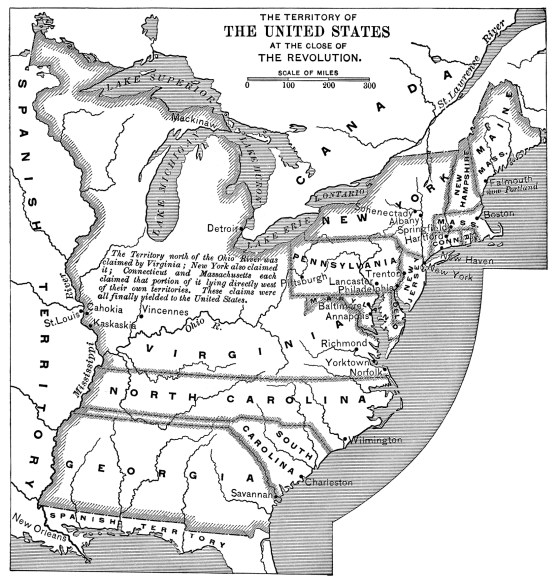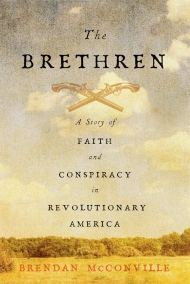September 28, 2021 at 10:45PMBrendan McConville
The Brethren did not begin as a tory uprising. Ironically, its members—a group of eastern North Carolina yeomen—believed themselves to be responding to a tyrannical conspiracy against Protestant liberty, and in resistance against forced military service. The evils they had been taught to fear their entire lives—popish plots and tyrannical Frenchmen, heretics and an overbearing government tearing men from their harvest to serve in standing armies—had arrived amid revolutionary chaos. And the changes that came with independence seemed to undermine beliefs that had for generations shaped their self-understanding as a free people; beliefs the U.S. revolution of 1775 had developed in support of.
[time-brightcove not-tgx=”true”]
But as American freedom took shape, elements within North Carolina’s revolutionary leadership redefined central tenets of Protestant British liberty as hostile to an independent republican state. (That enlightened political ideas had virtually no popular constituency in that early period of upheaval did nothing to temper this tendency.) Those leaders, and their supporters in the counties, would accept no criticism of the state’s actions or its members’ enlightened beliefs; the language of Protestant liberty that had been an ideological pillar of a free people had radically shifted its political position. It had become a weapon in a struggle over the course and nature of the Revolution, used as a discourse of criticism to assert a specific vision of liberty in a manner that some viewed as threatening.

This is not to say that loyalism was created solely by committee persecution in revolutionary America. Loyalism was a complex, varied, and at times contradictory identity within the fractured Anglo-American political reality of the time. However, it is fair to say that some of those who created a republican state later also created a jarring ideological dislocation by disowning the predominant ideas of liberty in the English-speaking world. That dislocation helps explain a central, unrecognized ideological paradox that soon emerged: by 1778 the beliefs that drove the Revolution in 1775 were being identified as counterrevolutionary.
Late in 1776 or early in 1777, John Lewellen, who served the state as a militia officer as well as a justice of the peace, had begun to tell others that heretics in the North Carolina government intended to make the state “subject to popery.” He wanted to seek relief from their plotting “and hop’d for a Blessing on the Indeavour.” Lewellen did not advocate violence against the state or its leaders, but sought redress and to halt the drift toward popish government.
Read more: Faces of the American Revolution
It was a series of angry confrontations that altered the movement’s political character. In early or mid-May, Lewellen encountered Albemarle committeeman James Mayo on some unnamed rural path. Mayo was part of a locally prominent family that had migrated from Virginia to North Carolina in the 1740s. They owned considerable land in Martin County as well as in several other southern and western Albemarle counties. By 1776 Mayo and his brother Nathan had become active revolutionaries and were heavily involved in revolutionary militias and committees.
When Mayo encountered Lewellen, he accused him of being an enemy of the people. More clashes soon followed. What specifically sparked them remained unstated specifically. But Lewellen’s views about the state leaders’ embrace of popery and heresy played a central part in it.
Albemarle committeemen and militiamen saw the Protestant associators’ words as a challenge to the revolutionary state. And in 1777, criticizing members of the state governments or the Continental Congress or the American cause generally—even thinking bad thoughts—all of these could get a person in a lot of trouble. The list of political offenses had expanded relentlessly since 1775, and many points of view had become criminalized.
Lewellen had seen or heard about suspected tories being interrogated, tortured, and imprisoned, their property seized and their families expelled from the new states. He knew exactly what to expect if the label stuck to him. Lewellen began denouncing Mayo as being “very particular in atacting any that was thote to be enemies to the state.” (His phrasing again suggests he did not think of himself that way when he exchanged the angry words with Mayo.)
Within weeks Lewellen and a faction in the movement’s leadership began to consider violence against the revolutionary leaders in the Albemarle region. Lewellen argued that Mayo should be killed; his brother Nathan also became a target. Brethren leaders described him as a “very Busy Body,” a “son of a bitch” who would get himself killed for spying on Lewellen and their movement.
And Lewellen soon realized he could not just murder the Mayo brothers, but that they needed to “kill all the heads of the County.” In late May, Lewellen began to contemplate a decapitating strike against the southern Albemarle’s revolutionary elite. The Brethren would eliminate with one thrust the state leaders who had embraced French-tainted popery and those who had threatened to arrest them. What had begun with an unhappy conversation soon cascaded into plans to decapitate the state government. Lewellen even began discussing killing Governor Richard Caswell, advocating for seizing the Halifax powder magazine and murdering the governor during a planned gubernatorial visit to the town sometime in June; King George III and his ministry now seemed less a threat than their own state leaders.
Read more: You Can’t Tell the Story of 1776 Without Talking About Race and Slavery
By mid-June the Brethren began talking like the king’s friends when they spoke to potential recruits. When James Rawlings brought David Taylor into the movement in late May, he indicated that the associators opposed the state government because “the Congress had given up the Country to the French to be governed by them, and then Popery would come into the Country.” He then went on to mention keeping their lands if royal authority was restored. Some recruiters told would-be recruits that the state leaders had to be confronted because the state’s loyalty oath contained heretical ideas. In their worldview, anti-Christian authority could be justly resisted.
Members, Lewellen insisted, had to be ready to join any royal forces that came to the Albemarle region and would receive munitions to do so. Lewellen and others who supported the loyalist turn actively began to consider inviting the king’s forces into the state; Lewellen went on to say “they would shoot any man who divulged the secret.”
The threats made against Lewellen, and later other Brethren leaders, had transformed the movement’s political orientation. Ideologically, Protestant political culture remained at its base, but by mid-June these leaders were no longer trying to save the commonwealth or support what they thought of as a Protestant revolution. They felt driven to a point where the empire and British army looked more attractive as rulers than their own countryman.
This change in political orientation explains the strange divergence in understanding within the depositions later taken when the movement came to be suppressed. Some portrayed the Brethren as a spiritual-political movement focused on stopping popery and heresy, and others suggest a loyalist conspiracy and do not mention popery or even forced drafts, or mention them only in passing. Across the six or seven months of its existence, the Brethren lived a profound shift in the nature of liberty.
The movement began to unravel with this turn toward a violent loyalist coup. An ideological gap opened among the associators as word of the movement’s new direction spread. When the leaders started to talk like tories—and after Lewellen shared plans to instigate a diversionary slave revolt to achieve his goal of murdering the state’s leadership—rank-and-file associators began to go to the state authorities to tell them what they knew and denounce the bloody-minded plans for a tory coup. These yeomen remained committed to Protestant liberty and the defense of community members. But they did not equate these goals with allegiance to a corrupted empire.
Can we really understand words uttered in anger on some forgotten rural trace as not only evidence of profound ideological change, but cause of change as well? We must if we wish to understand ideological change in revolutionary America at all. Archival sources reveal the role individual confrontations, pushing and shoving, rumors and threats, mobbings and assaults, battle and war played in transforming the revolutionary generation’s worldview. This is what happened in the Albemarle.

Excerpted from The Brethren: A Story of Faith and Conspiracy in Revolutionary America by Brendan McConville. Copyright © 2021. Available from Harvard University Press.








